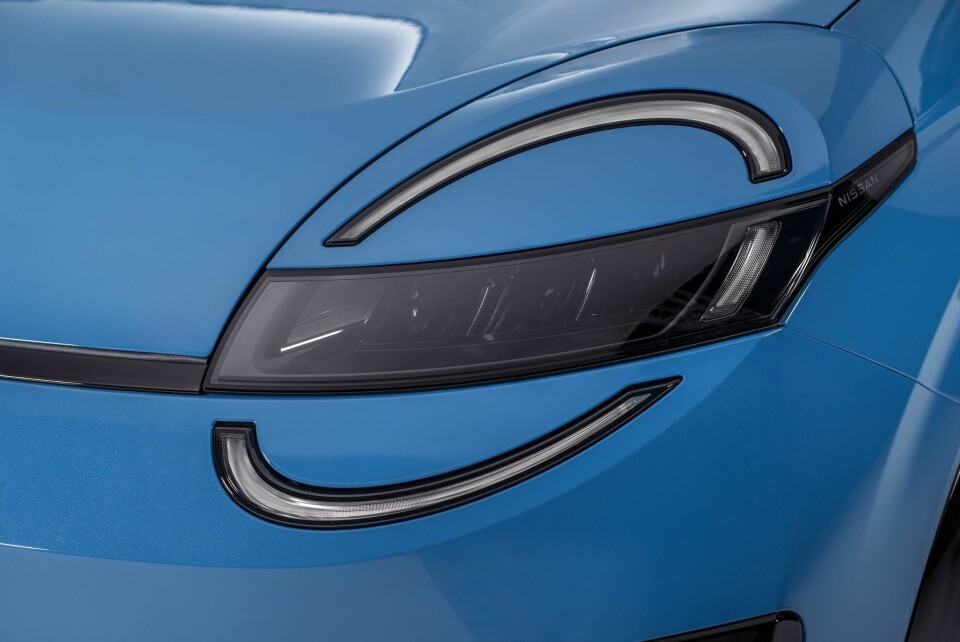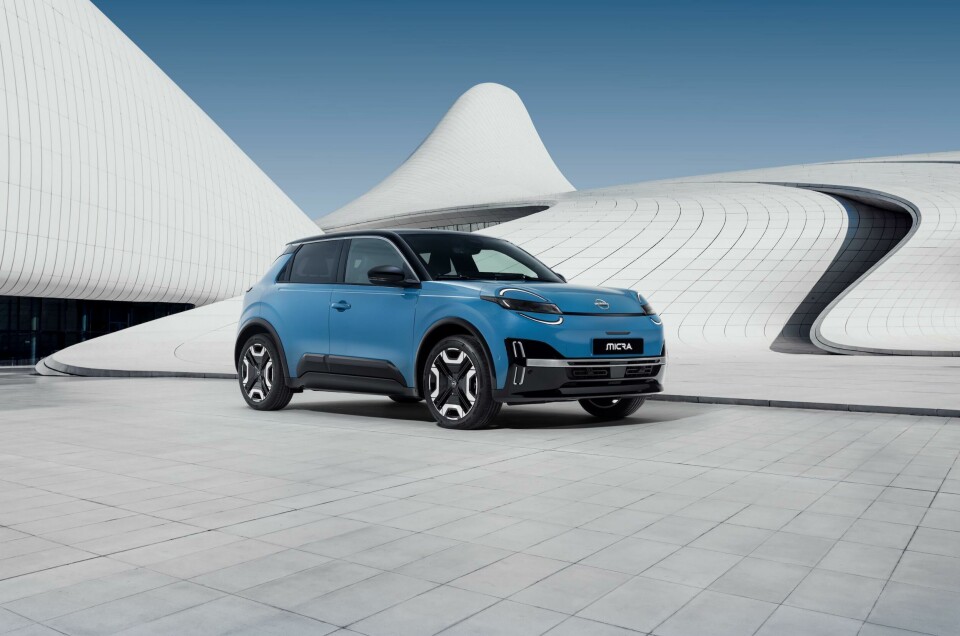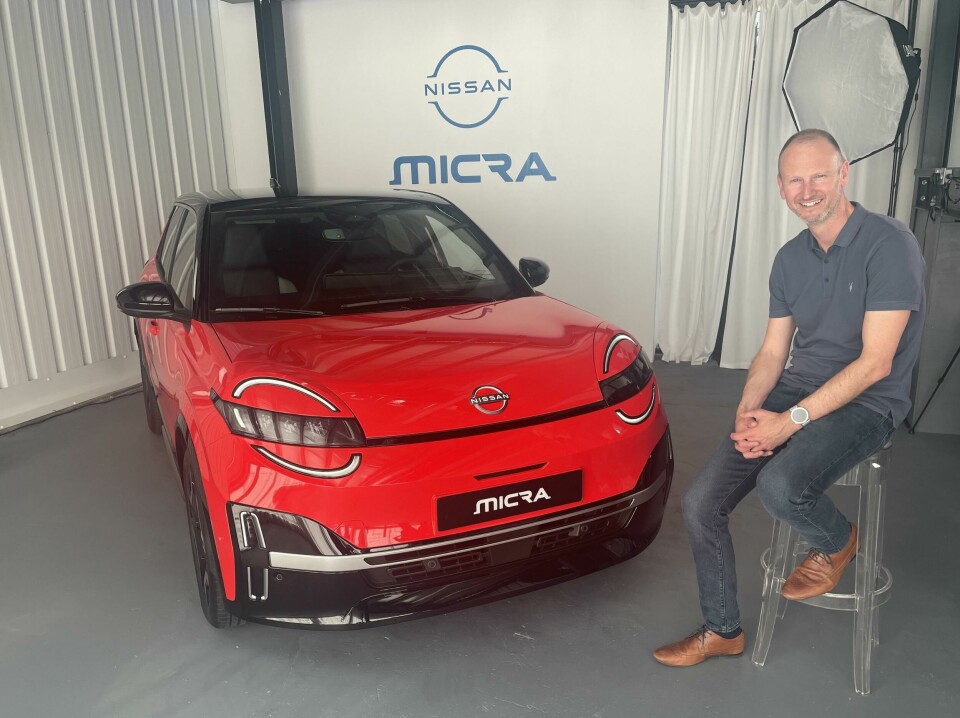
Sixth sense: Micra returns electric
As the sixth generation of the Micra is reborn as a full EV, Car Design News sneaked into a small and secret lock-up in south London to see the car up close and personal and ask the ever-affable European studio interior design manager and ‘Nissan Lifer’ Bert Dehaes to explain more
Given the new Micra was designed in London, it was appropriate that the new Nissan supermini got its sneak preview in the English Capital earlier this month. According to interior design manager Bert Dehaes, the design development process for both exterior and interior started in about 2022, well after the Renault 5 Prototype unveiled in January 2021 but also well before the production Renault 5 E-Tech was shown to the world at the (last) Geneva Motor Show in early 2024.

Those Renault cars are relevant as the Micra sits on the same electric-only platform as the new R5 and has almost all the same proportions, although Dehaes says the Micra is a bit longer. Those largely shared dimensions clearly create a challenge for differentiation – and Renault and Nissan are still sister brands within their Alliance despite some recent internal political turmoil – but the Japanese marque’s London-based European design team has done a pretty good job of creating some clean air between the two models.
The new Micra’s slightly-bulging, split-ring front headlights are clearly very different to the small Renault’s ‘lidded eyes’ but appear to owe a debt to the Fiat 500-e’s front face. Both are equally friendly though, which is a key trait of most Micra designs, with perhaps the exception of the directly previous sportier looking 2016 Mk5, due in part to its raked back front lights, complex angular side creases, window line and sloping rear roofline.
For the 2025 all-electric re-make, the 2002 Micra Mk3 seems to be the bigger influence, from referencing its elliptical front lights – which on the Mk6 now ‘wink’ at the driver on approach from left to right and back again – to the Mk3’s gently rounded front-to-back side shoulder and inboard window line.
On the more chunky, horizontal and crossover lite Mk6 a concave interpretation of this feature runs from the rearmost tip of the front light casing before finishing just under the hidden rear door handle. Called the “gelato scoop” by Dehaes on account of its shape recalling the rounded indentation an ice cream scooper makes when dishing up the sweet stuff, it’s a positive association with continental overtones which should be grist to a marketing man’s mill.
The Micra’s 18-inch wheels are big for a circa four-metre-long B-segment car and accentuated by repeated ring creases above the already large-looking wheelarches (but at least in contrast to the R5’s largely horizontal wheelarch accents). Tall black cladding in-between those arches stretches up from the sill into the body-coloured side door sections higher than on the R5 too, which helps reduce the collective mass of the Micra’s body further.

Dehaes was keen to point out a few details at the back of the Micra Mk6 including the distinctive shape of its dial-shaped rear lights, with red tab light off-shoots at ‘ten o’clock’ (on the left side) and ‘two o’clock’ (on the right).
He says it “took a long time to get the shut-lines right”, which cut through both rear lights, with half of each light dial attached to the rear flank of the car and the other half attached to the hatchback.
Maybe the Micra will hoover up more sales from those who don’t want to shout so loud
Look closely on the side of the car and the EV’s filler cap has two vertical line marks next to three horizontal ones, subtly referencing Nissan’s two syllables, which apparently sound phonetically like the words “two” and “three” in Japanese. Small design stuff maybe, but thoughtful storytelling nonetheless.
On the inside Dehaes quickly concedes that the Micra Mk6 has many carry-over parts from the R5, that presumably could not be changed for cost reasons. Nissan is aiming for the Micra to also be an affordable EV like the R5, starting in the early £20,000s, but the physical composition of the 5 E-Tech’s architecture has been harder to escape or mask than on the outside. The R5’s driver-angled centre screen and even the puffy grid of square shapes in the R5’s ceiling are both present and correct. But neither are particularly R5 signifiers – unless you are a major Renault interior design historian.
Most of the design changes for the Micra are in the software and surfaces, from a bespoke driver display and different centre touchscreen graphics plus some nice extra details, including a Mount Fuji-referencing design on the rubber slip mat covering the centre console storage floor (and on the boot’s black edges and revealed only when the hatch is opened). Dehaes says the iconic Japanese mountain remains an inspiration, as he told CDN, “You see it when you commute between Tokyo and Yokohama [Nissan’s HQ] so it’s special for Nissan designers.”
However, this Mount Fuji rubber mat does not represent one of a long list of personalisation options like on the R5, and there’s no Japanese equivalent of a clip-on wicker basket accessory for a French baguette. The difference comes more in colour, trim and finish, with light, dark and bright combinations. Dehaes particularly likes the ‘bright’ version – the CMF theme dubbed “audacious” in the presentation – with its nice, if still subtle, multi-coloured seat edge fabric ribbing. Truthfully though, the Nissan Micra Mk6’s cabin can’t really be called ‘audacious’ in any trim level. Still, it’s a distinctive enough exterior design, with Nissan designers doing a decent job with sound underpinnings from Renault.
While the R5 (and to a lesser extent the Alpine A290) might grab more headlines – and have the stronger emotional pull with those “just gotta have it” type customers, maybe the Micra will hoover up more sales from those who don’t want to shout so loud or draw that much attention. And that’s pretty much in line with the Micra brand identity promise of the last 43 years: quietly cute and friendly – and now electric too.





















